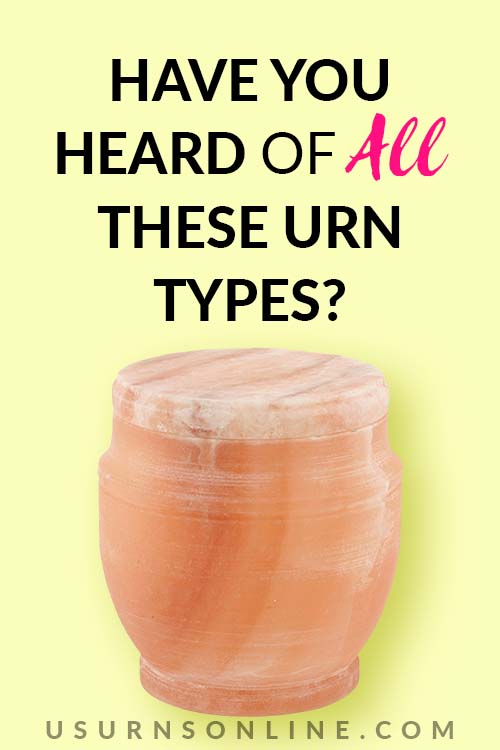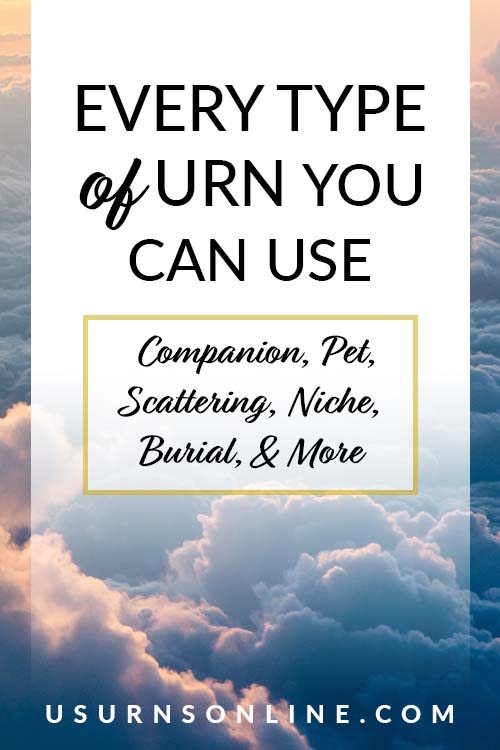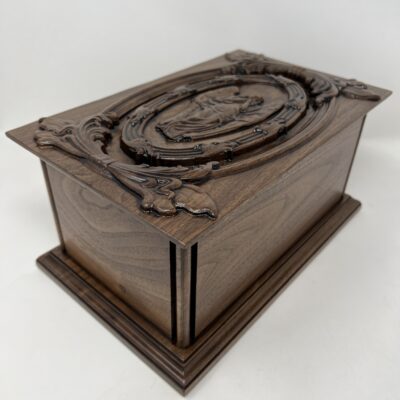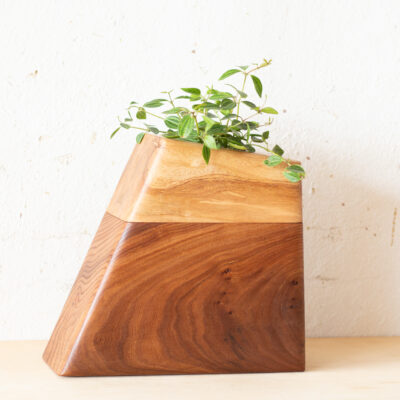Cremation urns come in a variety of types, styles, and sizes. Which one is right for your needs?
Today, we’ll take a look at the common terms that describe the different types of urns. You’ll learn what they’re used for, and what works best for you to honor your loved one (or to plan your own memorial).
8 Types of Cremation Urns
The first four types we’ll talk about describe the various sizes of cremation urns. The last four are urns used in different ways for specific purposes.
1. Standard Adult Cremation Urns
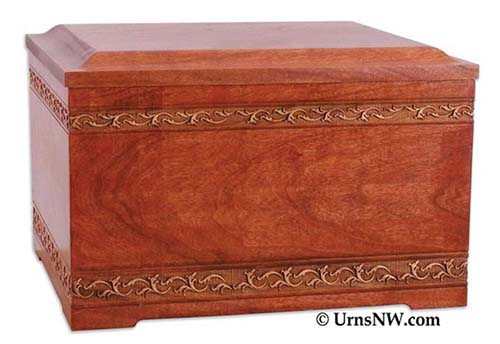
Most cremation urns are designed to hold the remains of one adult person. The standard adult urn holds 200 cubic inches of cremated remains, which is approximately more than equal to the amount of space needed for a person who weighed about 200 lbs.
Read more: Urn Sizes: How to Pick the Right Urn for Ashes
Unless an urn is described as a companion urn (which is larger, see below) or a pet, child, or keepsake urn (which are all smaller, also below), you should expect that the capacity will be right around 200 cubic inches.
Standard adult urns come in all shapes, styles, and materials. This means that the outside dimensions can vary quite a bit, depending on whether you choose a compact stone or wood box urn or a vase-shaped and ornately designed ceramic or glass urn.
You can see a good representation of what styles are available in the Urns Northwest store with our 12 Best-Selling Urns for Ashes.
2. Companion Cremation Urns
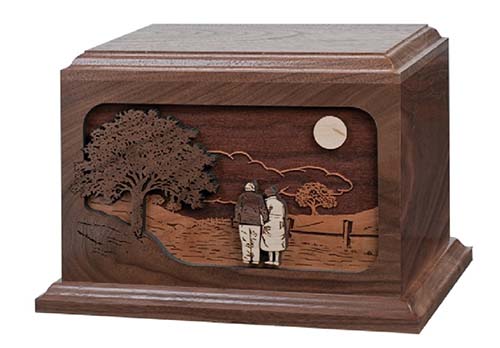
Companion urns are made to hold the remains of two people. Often a husband and wife, these types of urns are often described as a “couple’s urn” or an “urn for two.”
Some companion urns have separate compartments inside, but most have a single open space with room enough for around 400 cubic inches of remains. The cremated remains are typically placed into the urn in well-secured plastic bags. With a single compartment, this gives you the option to have the remains commingled together in one bag, or kept in their respective bags yet still together in the same urn.
Urns Made in the USA
3. Keepsake Cremation Urns
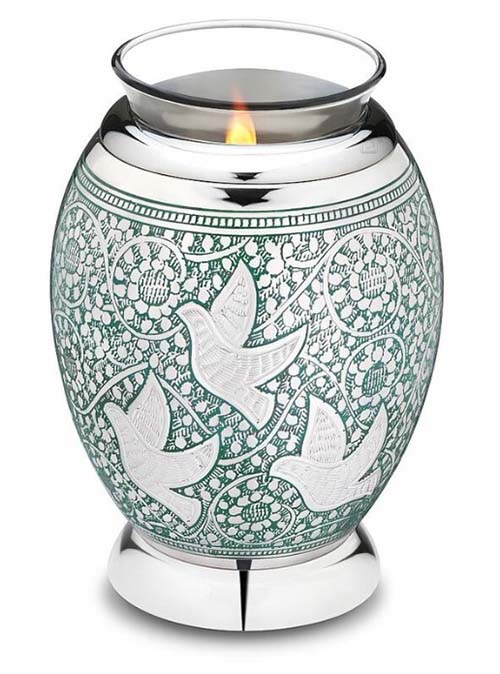
A keepsake urn is a small urn which holds a small amount of cremated remains, usually between 1-50 cubic inches.
The capacity of each keepsake will depend on the design of that particular urn. Some are intended to hold a tiny amount of remains, while others are meant to hold a larger portion when the ashes are divided among relatives.
4. Pet Cremation Urns
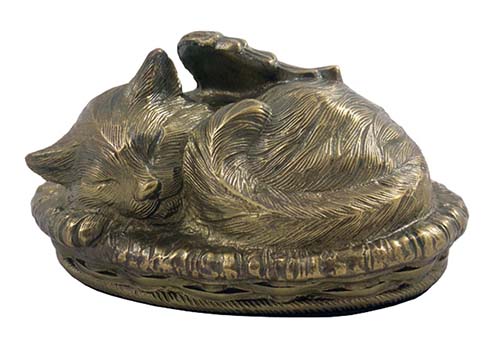
Pet urns are smaller than standard adult urns, and most often feature a pet-themed design.
However, any container will suffice to hold your pet’s cremated ashes, so you may find more options available if you include keepsake urns (for smaller pets) or standard adult urns (for larger pets).
As with human urns, pet urns come in a vast array of styles, designs, sizes, themes, and shapes.
5. Scattering Cremation Urns
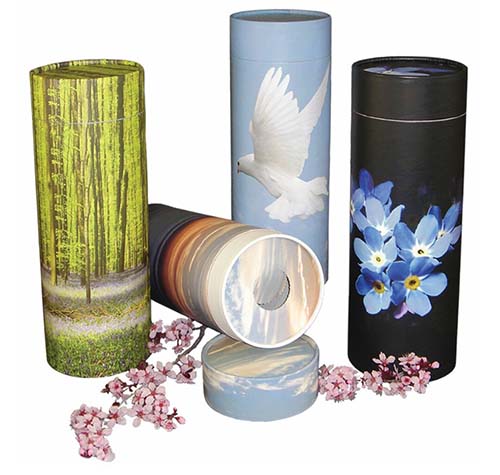
Now we’re getting into urns for different uses and purposes. Scattering urns are designed to make a scattering ashes event as simple and easy as possible.
These urns come in all sizes, from a small amount of ashes up to companion size for two people.
Most scattering urns have an opening or lid that makes pouring simple. However, there are water scattering urns that stay enclosed (which prevents the ‘wind blowing ashes everywhere’ stereotype from happening at sea). These water scattering urns are typically made from eco-friendly materials, and are engineered so that the urn floats briefly on the surface then sinks to the ocean floor to biodegrade and release the cremated remains into the sea.
Related: What to Say When Scattering Ashes
6. Biodegradable Cremation Urns
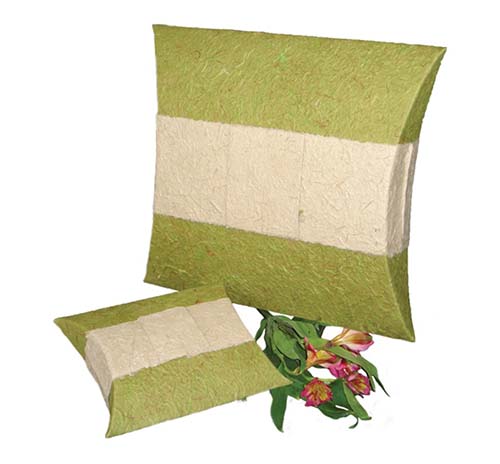
Earth-friendly natural burial practices are (rightly!) becoming more commonplace. One option is to use a biodegradable cremation urn for burial or scattering.
We talked about biodegradable scattering urns above. For ground burial, an eco-friendly urn that biodegrades is a lovely choice to return your loved one to the earth. Not all cemeteries allow them, so you’ll need to look into green burial cemeteries in your area.
7. Burial Cremation Urns
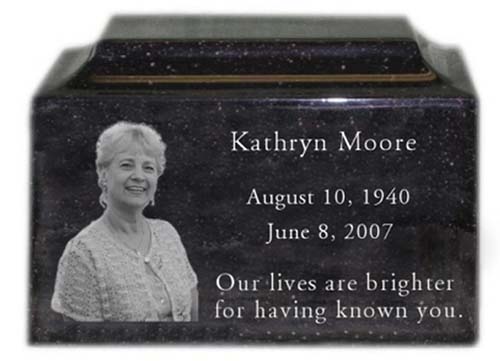
Going exactly the opposite direction, there are urns designed to stand the test of time when buried. The urns best suited for this purpose are stone urns, such as quarried (natural) or cultured (man-made) marble, granite, onyx, etc.
This type of urn can be buried directly in the ground without any risk of it decomposing over time. Alternatively, you can bury any urn using a protective burial vault.
Related: How to Bury an Urn
8. Niche Cremation Urns
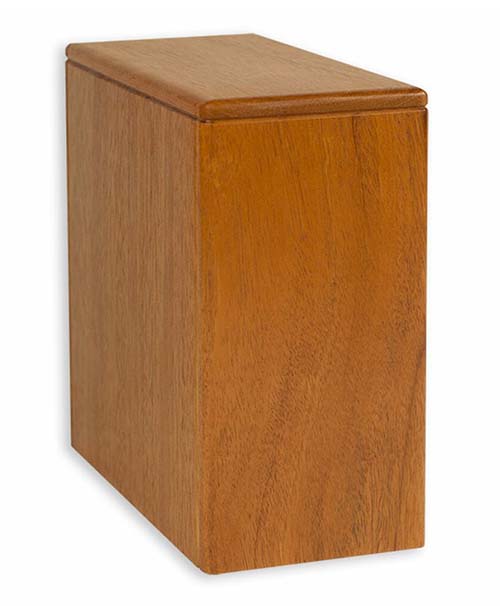
Most funeral homes and cemeteries have columbarium niches available. These are walls with vaults that hold a cremation urn.
Because the urn must fit into purchased space, you’ll want to make sure the dimensions of the urn you choose will work with the niche. Often, most typical urns will work, but when space is tight you might want to consider an urn specifically designed to fit into niches.
This urn is made to fit the remains of one or two people into the small niches at Arlington National Cemetery. As such, we’ve found that it works with just about any columbarium.
Urn Materials
Because an urn is essentially a container, any type of material can be used to make a cremation urn.
Typical urn materials include:
- Wood
- Metal
- Quarried stone
- Cultured stone
- Ceramics
- Glass
- Plastic
- Biodegradable materials
Urns can be as minimalist and inexpensive as a ziploc bag, a used tea tin, or a cardboard box. (Here is a big list of everyday items you can use as a cremation urn.)
Cremation urns can also be as artistic, well-crafted, and customized as you like. Some families commission an artist to create an urn specifically for their loved one, using their chosen medium. Most choose to purchase a cremation urn online or at the funeral home.
Other Types of Urns
Here are some other interesting, artistic, and functional urns that may inspire you to honor your loved one in that special, uniquely fitting way.
3-Dimensional Inlay Wood Urns
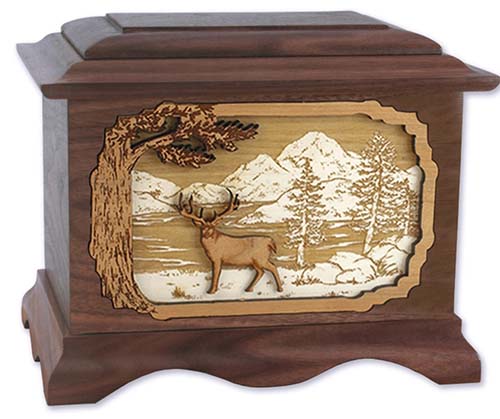
Yes, these are in one sense standard wood cremation urns. But the artistry involved takes them to a whole new level.
The 3-dimensional inlay art urns are crafted in the USA from solid wood. The scene on the front is laser cut in fine detail using layers of wood in their natural colors to create a lifelike 3D effect.
They’re available in many wood types (oak, walnut, maple, etc) and with a vast selection of themes. The scenes include depictions of nature and wildlife (hummingbirds, horses, wolves, butterflies), sports and leisure activities (golf, sailing, fishing), and much more.
Wall Mounted Plaque Urns
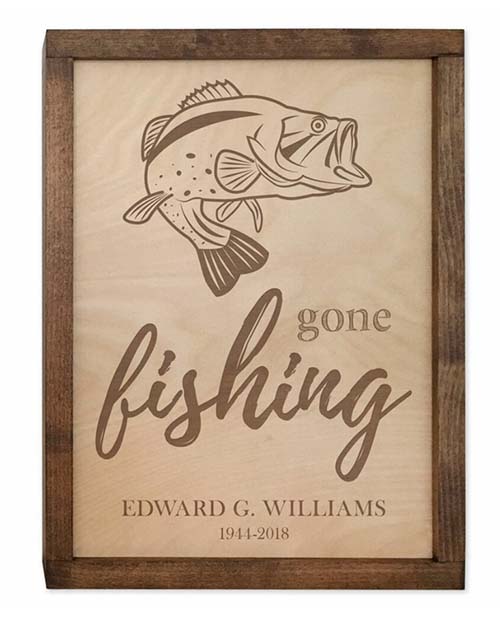
If you want a beautiful and personalized memorial but don’t want it to look like a cremation urn, this is the option for you.
The Pacific Crest Wall Mounted Plaque Urns are truly a creative choice to honor your loved one. These urns look like (because they are) plaques, but also can hold an adult’s cremated remains between the front and back panels.
Many options and designs available, be sure to browse them all!
Related: 25 Unique Urns That Don’t Look Like Urns
Engraved Photo Urns
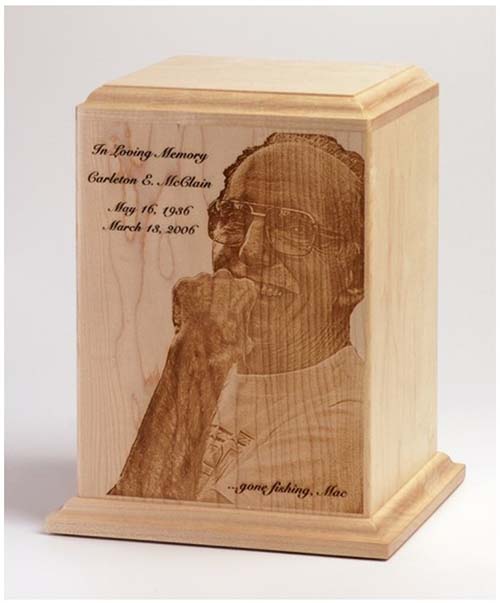
Many people love to place a photograph of their loved one next to the urn. But what if you could have the photo as part of the urn itself? Now there’s an idea!
Whether you prefer wood, granite, or ceramic, there’s a way to include your loved one’s visage on the urn. Browse the collection here.
Glass Art Urns
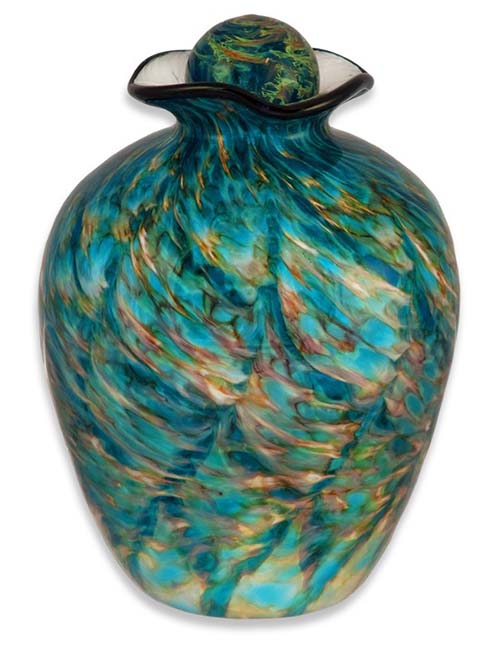
These glass art urns are individually hand-blown by incredibly talented artisans in Oregon. Many colors, sizes, and shapes are available to honor your loved one’s memory with a one-of-a-kind work of art.
Metal Urns for Ashes
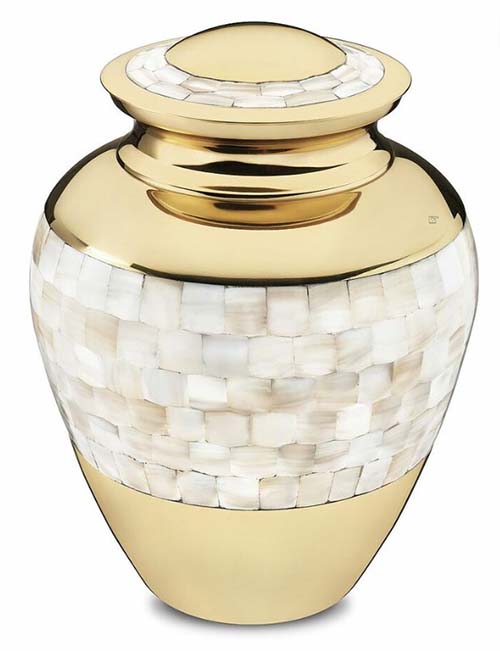
Metal urns are a wonderful low-cost option. Primarily made overseas, these urns typically feature a classic rounded vase shape with carved decorations, printed artwork, or other attractive accents.
Plant a Tree from Ashes Urn
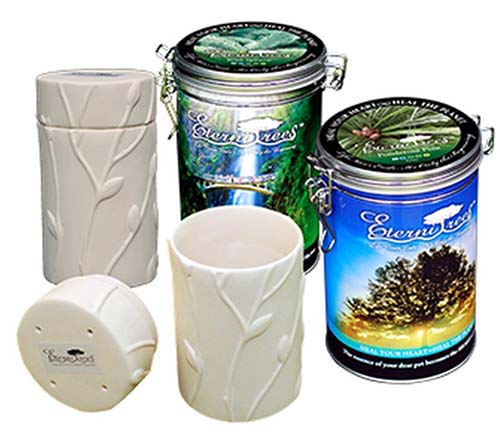
Yes, this is a real thing. You can “plant” these urns in the ground, and out will grow a legacy memorial tree!
The urns contain a mixture of ph neutralizing agents and plant food that will encourage the young tree to thrive, incorporating your loved one’s ashes into the soil that nourishes the growing tree. Learn more here.
Read Next: Can You Bury More than One Urn in a Plot?
Pin It
